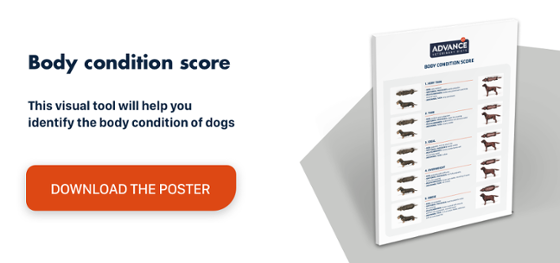Canine physiotherapy for the treatment of hip dysplasia
Canine physiotherapy should form part of a multimodal approach to treating hip dysplasia in dogs. Here, we discuss the main techniques and the importance of diet.
Hip dysplasia is one of the most common orthopaedic conditions affecting dogs, particularly large, fast-growing breeds, such as the Spanish Mastiff and Saint Bernard.
The problem is caused by joint laxity, which leads to abnormal development of the femoral head and acetabulum, and eventually the joint cartilage suffers excessive wear and develops secondary osteoarthritis.
The most common symptoms are pain, stiffness, loss of muscle mass, difficulty jumping, running and going up or down stairs, and a reduced range of motion. The treatment of hip dysplasia is generally multimodal and includes canine physiotherapy.
Aims of canine physiotherapy in the treatment of hip dysplasia
Physiotherapy for hip dysplasia usually focuses on reducing pain, increasing the range of motion, building or maintaining muscle mass and, ultimately, maintaining or decreasing the dog’s weight.
When rehabilitation is used after a surgical intervention, it has three goals: to reduce postoperative pain and inflammation, to improve the use of the limb and to protect the surgical site.
Once recovered from the surgery, the patient’s physiotherapy should focus on developing muscle mass, improving the hip’s range of motion and lowering body weight, as described in this study by Dycus et al.1
Common approaches to canine physiotherapy for hip dysplasia
- Therapeutic exercises. Many dogs with hip dysplasia also suffer sensory deficits, so some therapeutic exercises work on developing balance and proprioception. The programme includes exercises to help redistribute body weight, the use of wobble boards, and walking on irregular surfaces, such as air mattresses, foam rubber or sand, to promote hip extension.
- Cold and heat therapy. Cold therapy reduces nerve conduction and swelling, so it is very useful for central pain management and during flare-ups. Heat therapy also helps reduce pain and myofascial tension by promoting vasodilation and normalising blood flow in the affected area.
- Hydrotherapy. Hydrotherapy plays a key role in canine physiotherapy for hip dysplasia. Buoyancy favours muscle contraction and reduces the load from body weight, while the hydrostatic pressure reduces swelling and alleviates pain, which helps strengthen the muscles. As a form of exercise, walking in water is considered a better exercise than swimming, because it induces more positive changes in joint flexion and encourages a normal gait pattern.
- Therapeutic ultrasound. This can benefit dogs with hip dysplasia by improving the range of motion and decreasing any pain and muscle spasms. As its thermal effect reaches the deepest tissues, therapeutic ultrasound can increase collagen extensibility and improve blood flow.
- Electrical stimulation. This technique improves muscle strength and tone, thereby increasing the hip’s range of motion. It is also effective in relieving pain, swelling and muscle spasms. Neuromuscular electrical stimulation helps retrain the muscles, prevents muscle atrophy and improves joint movement, while transcutaneous electrical stimulation is effective for pain control.2
The role of diet in the treatment of hip dysplasia
In one study, 70 dogs with osteoarthritis of the hip were treated with the Advance Veterinary Diets Articular diet for 2 months. After the treatment period, there was a significant reduction in synovitis in both hips, increased flexion and extension of the coxofemoral joint, and a notable decline in pain. This indicates that canine physiotherapy and diet are both key factors in the treatment of hip dysplasia.
Reducing body weight is also an effective strategy in delaying or preventing hip dysplasia in susceptible dogs.3 After following 48 Labrador Retrievers, the study’s authors observed that a 25% calorie restriction almost doubled the time to onset of hip dysplasia and reduced the severity of symptoms. Hence, depending on the dog’s body condition score, Advance Veterinary Diets Articular Reduced Calorie is the right diet to reduce pressure on the joint.
1. Dycus, D. L. et al. (2017) Physical Rehabilitation for the Management of Canine Hip Dysplasia. Vet Clin North Am Small Anim Pract; 47(4): 823-850.
2. Mlacnik, E. et al. (2006) Effects of caloric restriction and a moderate or intense physiotherapy program for treatment of lameness in overweight dogs with osteoarthritis. J Am Vet Med Assoc; 229(11): 1756-1760.
3. Smith, G. K. et al. (2006) Lifelong diet restriction and radiographic evidence of osteoarthritis of the hip joint in dogs. J Am Vet Med Assoc; 229(5): 690-693.

